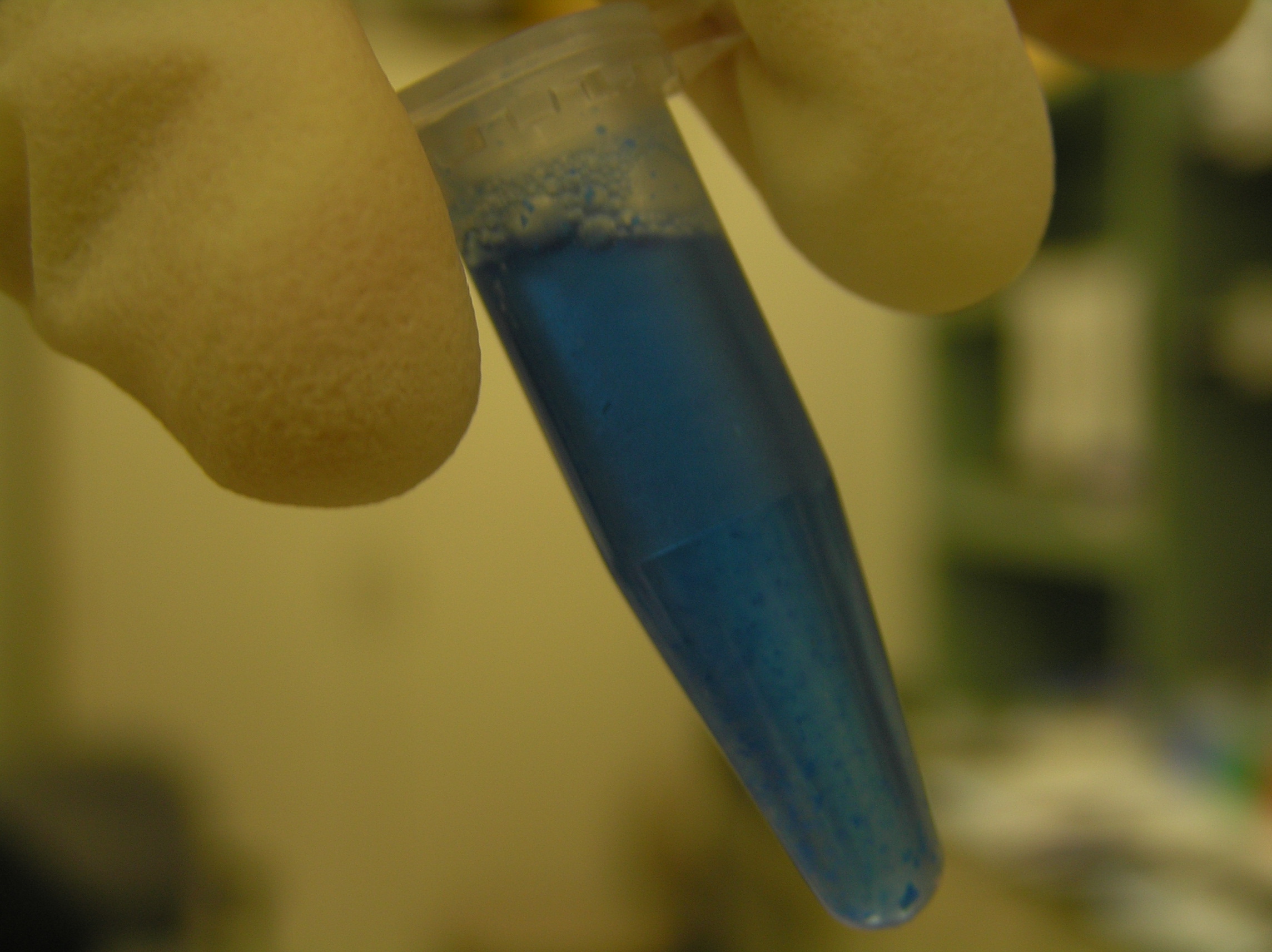Coomassie
|
WikiDoc Resources for Coomassie |
|
Articles |
|---|
|
Most recent articles on Coomassie |
|
Media |
|
Evidence Based Medicine |
|
Clinical Trials |
|
Ongoing Trials on Coomassie at Clinical Trials.gov Clinical Trials on Coomassie at Google
|
|
Guidelines / Policies / Govt |
|
US National Guidelines Clearinghouse on Coomassie
|
|
Books |
|
News |
|
Commentary |
|
Definitions |
|
Patient Resources / Community |
|
Patient resources on Coomassie Discussion groups on Coomassie Directions to Hospitals Treating Coomassie Risk calculators and risk factors for Coomassie
|
|
Healthcare Provider Resources |
|
Causes & Risk Factors for Coomassie |
|
Continuing Medical Education (CME) |
|
International |
|
|
|
Business |
|
Experimental / Informatics |
Editor-In-Chief: C. Michael Gibson, M.S., M.D. [1]

Coomassie (also known as Coomassie Blue, Brilliant Blue, Brilliant Blue G, Acid Blue 90, C.I. 42655, or Brilliant Blue G 250) is a blue dye commonly used in sodium dodecyl sulfate polyacrylamide gel electrophoresis (SDS-PAGE). The gel is soaked in dye for thirty minutes and then destained for thirty minutes or more. This treatment allows the visualization of bands indicating the protein content of the gel. The gel usually contains a set of molecular weight marker(proteins of pre-determined weight) so that protein molecular weight can be determined in an unknown solution during the visualization.
Variations
Shown at right is Coomassie G250. A similar but distinct dye, known as Coomassie R-250, also exists.
Laboratory usage
Coomassie dye is an integral component of the Bradford Method for determining protein concentration in a solution. The Coomassie dye binds to proteins via physisorptionto arginine, the aromatic amino acids, and histidine. When Coomassie Brilliant Blue G-250 binds to proteins in acid solution, it has an absorbance shift from 465 nm to 595 nm. The absorbance data can then be used in Beer's law to determine protein concentration and ultimately the actual amount of protein in a given solution.
Coomassie stain and destain solution formulas
For staining solution:
- 2.50 g Coomassie Brilliant Blue R-250,
- 455 mL ethanol,
- 455 mL deionized / distilled water,
- 90 mL glacial acetic acid
For destaining solution:
- 455 mL ethanol,
- 455 mL deionized / distilled water,
- 90 mL glacial acetic acid
(Can also be destained using only distilled water and heating, though at a much slower pace)
Common mix for Bradford reagent:
- 0.01% Coomassie Brilliant Blue G-250,
- 4.7% ethanol,
- 8.5% phosphoric acid, in deionized / distilled water.
Methanol has been used in the past and can be replaced by ethanol at all steps resulting in slightly safer reagents (methanol is a neurotoxin) while the efficiency of the procedure remains the same.
Name
Like many dyes, Coomassie blue dye is named after an African locale, in this case the city of Kumasi, now in Ghana. It was developed as an acid wool dye and was named to commemorate the 1896 British occupation of the Ashanti capital, then known as Coomassie.[1]
References
- ↑ Lecture Notes accessed on february 10 2007
External links
- Coomassie Blue Staining of SDS-PAGE - Recipes and Protocol
- Coomassie Blue: ingredients and procedure
- Coomassie Blue-commercial source